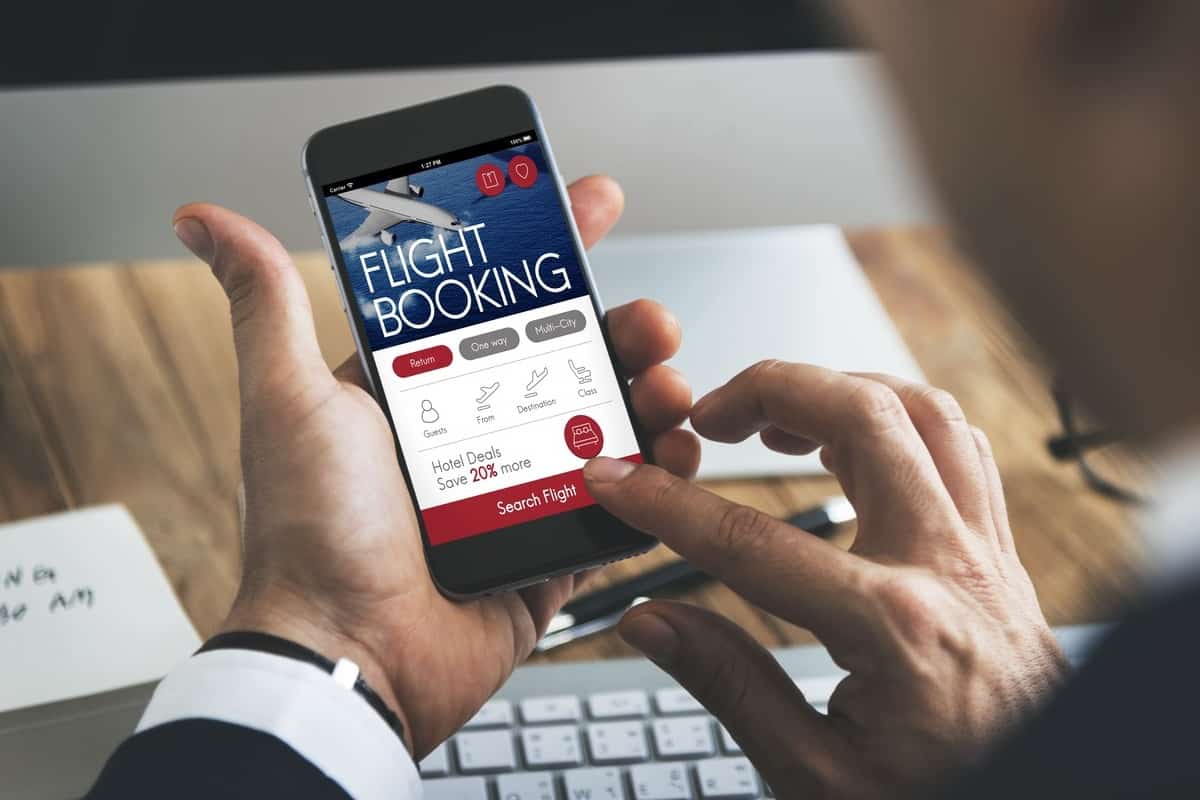The cost of travel has skyrocketed this year. After two years of a confusing pandemic, the rise in travel demand and low availability of staff resulted in inflated airfares across the board, but as travel experts have noted, those who are booking flights on their mobile phones are being hit the hardest, being more susceptible to paying more.
This is a particularly worrying statement, seeing that in the current climate, up to 48% of adults aged 20-40 in the United States shop on their phones – a far higher number than the global average of 34%. The data, obtained from a survey of 3,250 American customers carried out by Klarna, is precisely what has analysts concerned:
The Hidden Dangers Of Drip Pricing When Shopping For Flights
Drip pricing is a term employed in the industry to refer to the infamous add-on fees on flights. While a much cheaper ticket fare is usually displayed on the initial page, this is generally a ‘starting price’, or merely the seat itself: hold luggage, in-flight entertainment, meals and seat selection all come at an additional, and usually crippling, price.
During the purchasing process, as the customer proceeds in ticking boxes, adding their travel essentials or customizing their trip, the cost begins increasing dramatically. In fact, adding luggage on some flights can be more expensive than a standard Economy seat. Interestingly, heavy phone usage may be a contributing factor to the overcharging of some.
Pymnts.com, a website dedicated to analyzing the role of payments in new tech, the majority of travel service purchases were made on a mobile device in February 2022. As proved by Pymnts.com, more than half (51.4%) of travel purchases in the U.S. were made on mobile in February of this year.
The data comprises the month of February alone, but we’re guessing the trend hasn’t reversed based on the record-breaking profits some airlines are reporting, and the role of mobiles. As early as 2021, a study conducted by Marketing Science confirmed shoppers are induced to make ‘suboptimal’ choices in ‘drip-pricing situations’.
Travelers Are Less Likely To Compare Flight Prices In Drip-Pricing Situations
They observed travelers usually compare initial prices between competing carriers as opposed to the final price, which is higher most of the time. Regarding this phenomenon, Shelle Santana, a co-author in the study and Assistant Professor of Marketing at Bentley University, stated companies adopting the ‘drip pricing’ strategy usually come out winning.
‘The initial price is almost always lower than a competitor’s all-in price‘, Santana was quoted saying, alluding to the never-ending battle between low-cost, drip-priced airlines and other full service ones: ‘But once they start to add on amenities such as a checked bag, seat options, etc., that different in price (across firms) diminishes and sometimes reverses.’
As Santana puts it, shopping on the phone influences customers to accept whatever extra charge has been applied to the original product, as re-starting the entire process, a decision that usually entails losing all information provided, or opening up a new tab to find cheaper options, is perceived as time-consuming and a bigger hassle (in a small screen).
Booking flights can take several long minutes, as you add your name, personal information, passport details and make selections, so giving up halfway through over the cost of ‘add-ons’, under the notion there is no way to circumvent them, and that full-service airlines are always the costlier pick, is discouraging for many.
Customers End Up Paying More Finalizing Purchases On Their Mobiles
The researchers were surprised to learn that, even after the final price had risen, customers buying tickets on their phones were extremely ‘unwilling’ to compare different providers: ‘consumers perceive high search costs associated with starting their decision process over, and they think they will save less money than they actually will’, added Santana.
Just think for a sec: how many times have you switched between apps when booking a trip? There is the airline’s own app to account for, then there’s either Booking.com or AirBnB when it comes to accommodation, the calendar app, where you’ll need to check your own availability, and of course, flight-search tools like Google Flights or Skyscanner, among others.
That is a lot of tabs active on your phone browser simultaneously, and no matter how fast you are with your fingers, the chances of overlooking relevant information, or even forgetting that you had a secondary tab for comparison open in the first place is substantially higher. On larger screens, the decision-making process tends to be more comfortable.
In being comfortable, it may help shoppers think clearly before reaching for their wallets. There is an even earlier study to corroborate this: back in 2018, the Journal of Marketing analyzed customer behavior from more than one million sessions on a shopping website, and their results inform us those who concluded purchases from their phones paid higher fees.
Additionally, the higher conversion rate was far more noticeable with higher-priced products, a category comprising flight tickets. Concluding, Santana advised her fellow travelers to ‘always shop for travel on a desktop’: ‘I like to have several tabs open at once and toggle between them to make sure I understand price differences and drivers across firms‘.

